His Father’s Game
YULA standout Eli Hami has used basketball asa refuge since the 1993 murder of his ‘Aba’
By Avi Lidgi
COMMUNITY BRIEFS
The future Yavneh Hebrew Academy sitewill accommodate 498 students.
Not in Our BackYard
Hancock Park residents express concernover Yavneh Hebrew Academy’s imminent move to its new facility onThird Street
By Naomi Pfefferman,Senior Writer
There is a new reality of life in the upscaleurban oasis of Hancock Park.
The Orthodox Jewish community is moving in andchanging the face of the neighborhood, says Orthodox activist StanleyTreitel. More than 10 percent of the residents are observant Jews,sources say.
With the change has come a series of neighborhoodstruggles, as the Orthodox make inroads in the genteel, oldarea.
One such conflict revolved around Congregation EtzChaim of Hancock Park’s purchase and use of an elegant mansion at 303S. Highland Ave., zoned exclusively for residential use.
Another concerns the Yavneh Hebrew Academy, whichhas purchased the Tudor-style building at 5353 W. Third St. –previously the Whittier School of Law. The yeshiva bought the grand1922 structure for some $4 million early last year; when an estimated$6 million in renovations are completed, Yavneh will vacate itscurrent facility at 7353 Beverly Blvd. and move east.
The school, established in 1960, now accommodatesabout 400 students, preschool through eighth grade; the new site willhold 498.
“We’re moving because we outgrew our oldlocation,” says Yavneh President David Rubin, “and because there hasbeen a demographic shift in the area. We cater to a centrist Orthodoxcommunity, which you’ll find in Hancock Park.”
With the move, Yavneh joins the growing list ofLos Angeles Jewish schools that are expanding or have built newfacilities, from Sinai Akiba Academy to Harkham Hillel HebrewAcademy.
“Since half our students live in or around HancockPark, this will be a real community school — a dream come true,”says Walter Feinblum, Yavneh’s chairman of the board.
But for many of the neighbors on Las PalmasAvenue, June Street and McCadden Place, the move will cause “atraffic nightmare,” says Janice Carpenter, who lives within 500 feetof the property.
The yeshiva will compound existing traffic andparking problems caused by the Third Street Elementary School, apublic school across the street from the Yavneh site, Carpenter says.Already, the public-school parents sometimes park across Carpenter’sdriveway to walk their children to class, she says. They double park,speed down Las Palmas and make U-turns in the middle of the street.Additional traffic flows in from John Burroughs Junior High, severalblocks away. “I can’t get down my street in the morning andafternoon,” says Carpenter, who has lived on Las Palmas for 28years.
Other neighbors, many of them Jewish, expressedsimilar concerns at a Feb. 12 zoning hearing, where Yavneh sought aconditional-use permit to turn the law school into a children’sschool. At the end of the emotional hearing, the zoning official saidthat he would hold off his decision until next month. He wants togive Yavneh and the Hancock Park Homeowners Association time to reachfurther compromises on outstanding issues.
Meanwhile, neighbors told The Jewish Journal thatthey have no problem with Yavneh per se. After all, the site hasalways been a school: first a girls’ boarding school, then an artschool, and finally a law school.
But the residents are worried about Yavneh’ssummer camp, its adult education classes and the possibility that itmay evolve into a community center. They are concerned about theheight of the new gym and about playground noise, especially onSunday mornings, when the boys will be in class from 8 to 11:30. Mostof all, they want to know why Yavneh is seeking permission to remainopen until 10:30 p.m. Most elementary schools close by 6 p.m., saysJames C. Wolf, president of the homeowners association.
Some of the neighbors feel mistrustful because ofa previous zoning issue involving Orthodox Jews in Hancock Park, saysassociation board member Marguerite “Chickie” Byrne.
In 1996, Congregation Etz Chaim moved into thewhite manse at the busy intersection of Highland Avenue and ThirdStreet, which is zoned for residential use. After zoning officialsand the Los Angeles City Council rejected the shul’s request to stay,Rabbi Chaim Rubin vowed to sue the city for violating congregants’religious freedom. Today, synagogue services are continuing as usual,and Rubin was asked to testify on Feb. 26 before a congressionalcommittee on the Religious Freedom Restoration Act, which was struckdown last year.
Although Yavneh is not illegally moving into aresidential property, “the two situations are related in people’sminds,” Byrne says. “I feel Yavneh is trustworthy, but others aren’tsure.”
David Rubin, for his part, says that Yavneh hasrepeatedly met with residents during the past eight months and hasresponded with an 18-point “Good Neighbor Policy.”
The policy specifies an on-site carpool loop;staggered group arrivals and departures; a bus and van service; and$250,000 worth of acoustic walls to deaden playground noise. The gymwill be built to look like a two-story house, and it will beapproximately 30 feet high to blend in with the surroundingbuildings. Yavneh plans to maintain the property with its existingTudor look and wide, green lawns, Rubin says. There will be 93parking spaces, and, no, the facility will not turn into a communitycenter.
Nevertheless, Rubin continues, Yavneh is differentfrom a secular private school. Because it is a yeshiva, there are twocurricula — Judaica and secular studies — which means longer hoursare necessary. There will be early childhood programs; a classroomdedicated to adult/parent education; and a summer camp, which Yavnehhas had for years. But on most evenings, the yeshiva will have feweroccupants than the law school, which had 230 students five nights aweek, Rubin insists.
“We’ve tried very hard to work with the communityand to take the high road,” Feinblum says. “We just want residents tobe reasonable and to realize we can’t take the school away. And wecan’t make the children not make noise.”
Treitel sees it differently. He points out thatthere is a campaign to elect more Orthodox residents to thehomeowners association board, where four of some 18 members arealready observant Jews.
“It’s time for Hancock Park to wake up and smellthe coffee,” Treitel says. “Whether the issue is [Congregation EtzChaim] or Yavneh, the Orthodox community is here to stay.”
The Touch of Faith
Rabbi Kalman Winnick, UCLA Medical Center’slone Jewish chaplain, touches the lives of patients in manyways
By Elaine Schmidt
 Winnick feels so strongly about comforting the sick heworked three months without pay. Photo byWilliam Short
Winnick feels so strongly about comforting the sick heworked three months without pay. Photo byWilliam Short
While visiting a patient in the intensive careunit of UCLA Medical Center, Rabbi Kalman Winnick noticed a tiny babyalone in a nearby room. Drawn by the infant’s solitude, he approachedand began to stroke and softly sing to the boy.
How wonderful, remarked a nurse, as she watchedthe machine that was monitoring the infant’s vital signs. “The baby’sblood pressure and heart rate are responding to yourpresence.”
Winnick, who is unmarried and grew up in Van Nuys,knows what it is like to be ill and afraid. When he was 14, hesuffered a near-fatal accident that resulted in temporary paralysis,painful operations and months in the hospital. Now 36, the UCLAchaplain resident is quietly emphatic when he says, “People in thehospital shouldn’t be left alone.”
He feels so strongly about bikur cholim, themitzvah of comforting the sick, that when he was accepted to UCLA’sone-year pastoral-education program, he worked without pay for thefirst three months of the full-time residency — until the hospitalobtained funding for his salary.
Winnick has supplemented his regular hospitalduties by leading High Holiday programs, building the hospital’sfirst sukkah, and importing latkes for Chanukah. He commemorated TuB’Shevat by organizing the delivery of flowers by UCLA Hillelstudents to Jewish patients and pediatric patients. He has alsolaunched a weekly Torah-study class and Shabbat service.
These programs are open to everyone, but areespecially meaningful to Jewish patients, who comprise nearly 15percent of the hospital’s census. Like many American Jews, a largenumber of UCLA’s patients are not affiliated with a synagogue anddon’t have an existing relationship with a rabbi. Other patients cometo UCLA from across the country or overseas, and their own rabbis arefar away.
“Jewish patients tell me it makes them feel moresecure to know a rabbi is in the hospital,” said Winnick, the loneJewish chaplain on staff.
Raised as a Conservative Jew, Winnick was firstordained as a Conservative rabbi after studying at the University ofJudaism and the Jewish Theological Seminary. His commitment tohalacha motivated him to further his studies in Jerusalem at YeshivatDarche Noam and the Gruss Kollel of Yeshiva University. He receivedsmicha, Orthodox ordination, from both the chief rabbi and head ofrabbinic courts in Jerusalem.
“I love the richness of Orthodox tradition,”Winnick said. “But I will never allow it to separate myself fromanother Jew or human being. That same tradition requires me to be asource of comfort and teaching for everyone.”
Before joining UCLA, Winnick earned rabbinicpulpit and teaching experience in a diverse range of settings. Hisfirst job was as associate chief rabbi for the Jewish community ofStockholm, Sweden. Then, he worked as rabbi for Heschel Day School inNorthridge before returning to Israel to enhance his training.
He is excited to add a new dimension to hisexperience by working in a hospital. “I think that the acts of chesed[loving kindness] I perform as part of UCLA’s chaplain team are asimportant to the Jewish world as leading a school or synagogue,” hesaid.
With his Book of Psalms tucked under his arm,Winnick wings through the corridors of the hospital like a beardedangel, flying from residency classes and leading services forpatients and staff to weekly rounds and asking nurses if a patientneeds a chaplain. Often, his duties transcend those of the typicalpastoral-care resident.
Fluent in Hebrew, Winnick has interpreted adoctor’s explanations for an Israeli man awaiting a heart transplant,and helped the patient’s wife order kosher food. Another time, hecomforted a Jewish family that was grieving after the mother’s death.Unaffiliated with a synagogue, they asked him to lead the funeralservice. They were so delighted with the ceremony, that they laterinvited him to their home to celebrate Chanukah.
Winnick doesn’t restrict his services to Jews.Recently, after visiting a Jewish patient, he asked her non-Jewishroommate if she would like to pray too. “Would you please sing for mein Hebrew?” the woman asked. He noticed a Spanish-language Bible onher bed. He paged through it until he found a corresponding prayer inhis Book of Psalms so that she could follow along in Spanish as heprayed in Hebrew.
“I see interfaith interactions as a wonderfullearning opportunity,” Winnick said. “If people from differenttraditions can find common ground in the hospital, it can be thefirst step toward healing outside the hospital too.”
UCLA Medical Center is seeking community help tofund Winnick or another rabbi on a permanent basis, as well as tworabbinic interns. For more information, call Judith Deutsch,associate director for development, at (310) 267-1854.
Elaine Schmidt writes for UCLA Today, in whicha version of this article originally appeared.
A Super Success
The 5,000 volunteers at this year’sannual UJF fund-raising event raise $4.5 million
By Ruth Stroud, Staff Writer
Michelle Milikan sat, poring over a pile of donorcards, sad that no one she had called agreed to pledge any money.”They either hang up on me or they say, ‘This person is out oftown,'” said the Temple Emanuel Day School fourth-grader. ButMichelle was determined not to give up. After all, she said, it was amitzvah to be a phone volunteer on Super Sunday — the biggestfund-raising day for the Jewish Federation of Greater Los Angeles’United Jewish Fund.
Michelle’s perseverance, as well as that of thesome 5,000 other volunteers, certainly paid off. The event’s finaltally reached $4.45 million, compared with just under $4.2 millionlast year, said Bill Bernstein, campaign director and a Federationassociate executive vice president.
The South Bay and western regions showedparticularly significant increases in both participation and dollars.”That showed that Super Sunday is indeed a community-building event,and both those regions used it as such,” said Super Sunday ChairDavid Aaronson.
Political luminaries, quick to recognize theimportance of the day to the Jewish community, showed up at severalof the sites. Lt. Gov. Gray Davis, who was acting governor for theday in Pete Wilson’s absence (and is an expected gubernatorialcandidate in the next election), took time off from designatingregional flood emergency zones throughout the state to declare SuperSunday “Jewish Federation Day.”
Also making appearances at the Westside JCC site:Assembly Speaker-Elect Antonio Villaraigosa, Congressman HenryWaxman, Los Angeles County Supervisor Zev Yaroslavsky (making firstcalls) and Los Angeles School Board member David Tokofsky. LosAngeles City Council members Michael Feuer and Ruth Galanter andAssembly members Wally Knox, Kevin Murray and John Chiang (actingmember of the State Board of Equalization) presented a resolutionfrom the state Assembly in recognition of Israel’s 50thbirthday.
At the Jewish Federation/Valley Alliance, CityCouncil member Laura Chick made the first call, and Assembly membersRichard Katz, Bob Hertzberg and Knox, City Council member CindyMiscikowski, Yaroslavsky and Congressman Brad Sherman showed up laterto handle the phones.
On the Westside, Joe Roth, chairman of Walt DisneyStudios, made first calls to his boss, Disney corporate chairmanMichael Eisner, and William Morris head Arnold Rifkin, both of whommade contributions, according to Western Super Sunday Chair CarolineKelly.
Jennifer Materman, South Bay Council Super Sundaychair, said that the South Bay raised 30 percent more money this yearthan last and increased its volunteer count to more than 180, from169. “We had a lot of children this year, and a lot of new youngvolunteers,” she said.
The influx of young, enthusiastic volunteers, partof the Federation’s push to reach the next generation of UJFsupporters, is a growing phenomenon on Super Sunday, says FaithGershbock. She chaired the third annual Mitzvathon, which offeredyoungsters a mix of fun projects that helps show them “how totranslate dollars into deeds.”
This year, the array of activities includedeverything from painting yarmulkes and T-shirts for Cuban Jews tomaking peanut-butter-and-jelly sandwiches for Los Angeles’ homeless.Synagogues, Federation beneficiaries, Jewish schools, agencies andcamps oversaw the booths at three of the four sites. Some children infourth grade and above made calls. Actress Megan Parlen, 17, of theNBC kids show “Hang Time,” did projects at Mitzvathon, as did hermother, Laine, who works at the Skirball Cultural Center.
At the Westside JCC, Daniel Zakowski, 17, andMichelle Jacobs, members of the Jewish Community Youth Council, whichhelps organize the youth campaign, said that youngsters often makecalls to other teens. “We don’t raise that much money, usually $5 or$10,” said Zakowski. “But even if they only give $1, it’sgreat.”
His Father’s Game
YULA standout Eli Hami has usedbasketball as a refuge since the 1993 murder of his ‘Aba’
By Avi Lidgi
“Aba” (Hebrew for father) was the Michael Jordanof Eli Hami’s life, steering and guiding him, “both in basketball andin life.”
Hami remembers playing basketball with his fatherand three brothers in their small San Fernando Valley back yard,wrestling and laughing, less concerned with who won than with thetime spent together.
“We used to play for fun,” Hami says. “He [Aba]wasn’t that great, but we always had fun.”
The fun was tragically stopped on Nov. 10, 1993,when Joseph Hami, on a business trip to San Francisco, was brutallyattacked by assailants who robbed him of $100,000 in jewels he wascarrying from a convention.
It wasn’t the only thing they robbed.
“I lost my father,” says Eli Hami, his voicetrailing. “I loved him very much.”
In time, basketball would become more than just agame to Hami. It would become his refuge.
“After my dad died, I became a little bit morequiet, I guess,” says Hami, a standout senior guard/forward forYeshiva University of Los Angeles. “When I have a problem, I like toplay basketball…. I feel like he’s still with me.
“When I’m there [on the court], playing, I feellike he’s there too, watching me.”
Hami returned to school shortly after the tragedyand excelled. Just a year after his father’s murder, he made thevarsity squad midway through his freshman season at YULA. From thenon, the team has experienced unprecedented success, and he hasdeveloped into not only the putative leader of his team but the mostvaluable player of his league (in 1997).
The unassuming, 5-foot-11 Hami, heavily recruitedby such schools as Brandeis, Boston University, NYU and Wyoming,almost needs to be prodded to talk about his myriad accomplishments.So he lets others do the talking for him.
Says YULA Coach Ed Gelb, longtime friend and closeconfidant: “Off the court, he’s quiet, shy, humble. He finds hisvoice on the court. That’s where he communicates.
“He’s a special kid. On the court, he’s…anartist, amazing to watch. You wouldn’t think it by meeting him, buton the court, he’s a roaring lion.”
A lion who doesn’t mind the sand-strewn courts ofYULA, an outdoor facility that makes practicing impossible on rainydays.
Joachim Benloulou, 17, is a teammate who has knownHami since kindergarten. While the tragedy clearly affected Hami,says Benloulou, his game only improved. “He was louder, more vocal,”the teammate says. “He’s quieter now [and remains] the most humble27-points-a-game scorer I know.”
Asked who the team looks to when a basket isneeded, Benloulou, also a starter, doesn’t hesitate: “Hands down,he’s the best player, and I’m honored to be mentioned in the samesentence as him.”
During his sophomore year, Hami and his familymoved to Israel. The move did not sit well with him; he wasmiserable.
 “I didn’t wantto leave my friends,” Hami says. “I missed the team.”
“I didn’t wantto leave my friends,” Hami says. “I missed the team.”
He needed to talk to his coach. His friend. So onenight, depressed and lonely, he telephoned the only person he knewwho could help.
“I called him at 2 in the morning,” Hami says,half-embarrassed. “I was depressed and didn’t know what to do. I knewhe would help.”
Gelb says: “You know how you get those phone callsat, like, 3:30 in the morning from a family member because yourgrandma has died or something. Well, that’s what it was like.”
With Gelb’s encouragement, Hami came back, helpingthe Panthers win the Westside League title and go undefeated. Theyhave never lost another league game since.
The taunts and jeers that invariably follow a teamthat wears kippot to the game and davens after it (usually a win) hasgiven Hami pause to reflect on the religion he holds so dear.
“It hasn’t been that bad,” he says. “They’ll throwpennies on the court sometimes and say things about Jews [during thegames]. They do that, and we just have to ignore it. I just playbasketball. I wouldn’t want to change anything.”
Basketball is much more than just a game forhim.
“I would love to play for the European Leaguesomeday,” he says. The NBA is not an option for Hami, as it wouldrequire him to play on Friday, violating his religious beliefs, acompromise he is not willing to make.
Even if he were called up by the man himself,Michael Jordan — Hami’s favorite player — to play for theBulls?
“Compromising means violating,” he insists. “Iwouldn’t do it.”
With that, Hami pauses, reminded for a second thathis Aba is not here to share in his son’s tremendous success andgrowth. Or to play a friendly game in the back yard.
Avi Lidgi is a free-lance sportswriter whoresides in Los Angeles.
Community Briefs
Celebrating Women’s History
Eighty-seven years ago, a teen-ager ran,screaming, out of the Triangle Shirtwaist Company factory, lucky toescape the fire engulfing the building. Now 104 years old, thatsurvivor, Rose Freedman, will share her memories of this historicevent, as part of March 1 celebration of Women’s History Month at theAmerican Jewish Congress’ Feminist Center.
The Triangle Shirtwaist Factory fire occurred onMarch 25, 1911, one of the greatest tragedies of American labor andwomen’s history. Trapped inside the burning building — the doorswere locked from the outside, ostensibly to prevent workers fromstealing, and there were no fire extinguishers and only one fireescape — many girls jumped out of the windows to their deaths. Of500 workers, 146 died, most within 20 minutes, and many more wereinjured. Many of the bodies were never identified.
 Thecommemoration, entitled “Women in Labor,” will take place thisSunday, March 1. In addition to Freedman, the Feminist Center programwill feature award-winning actress Rita Zohar, above, who’ll deliverunion organizer Rose Schneiderman’s powerful memorial speech, andProfessor Karen Brodkin of UCLA’s anthropology department, who’llspeak on “Jewish Mothers and Daughters: Exploring Womanhood, Work andFamily.”
Thecommemoration, entitled “Women in Labor,” will take place thisSunday, March 1. In addition to Freedman, the Feminist Center programwill feature award-winning actress Rita Zohar, above, who’ll deliverunion organizer Rose Schneiderman’s powerful memorial speech, andProfessor Karen Brodkin of UCLA’s anthropology department, who’llspeak on “Jewish Mothers and Daughters: Exploring Womanhood, Work andFamily.”
The program will be held from 2 to 4 p.m. at aprivate home in Santa Monica. Please call the AJCongress at (213)761-8940 for reservations and directions. A small admission will becharged, and refreshments will be served. — Judith Glass
Israel Experience Goes MTV

Israel Experience Inc., a nonprofit organizationwhose goal is to increase the number of North American Jewish youthwho participate in educational journeys to Israel, has launched aninnovative marketing campaign to make trips to Israel a normative andexciting dimension of life for Jewish teens andtwentysomethings.
The national marketing effort of IsraelExperience, which was founded by the Council of Jewish Federations,the Charles R. Bronfman Foundation, the Jewish Agency for Israel,Israel’s Ministry of Tourism and United Jewish Appeal, is unique forthe Jewish community.
Israel Experience is employing different vehiclesand “funky” themes on a national scale to make it a household name.There are “cool,” eye-catching ads with creative phrases such as”Party the Red Sea” and “Surf Israel,” which will appear in such teenmagazines as Seventeen, YM and Spin. There are radio commercials withthe message that “Israel is Phat,” to be played on radio stationsacross the country. Israel Experience’s Web site address(www.israelexperience.org) is included in each ad and radio spot. Thesite, which will be linked to other youth-oriented sites, includingMTV Online, the NBA and Wall of Sound through online banners, hasdifferent search functions to help those interested in finding outmore about individual programs.
Interest in educational journeys among NorthAmerican youth has significantly increased since Israel Experiencelaunched its campaign in January. Calls to Israel Experience andvisits to the Web site have tripled. Since Israel Experience is lessthan a year old, it has yet to determine the actual rate of increaseof Jewish youth visits to Israel as a result of these new adcampaigns.
Israel Experience is hoping to attract celebritiesas spokespeople to keep interest on the rise. — Orit Arfa, Contributing Writer
MKs Get a Taste of L.A.
While Israelis scrambled to obtain gas masks inpreparation for an Iraqi attack and the peace process itselfcontinued to gasp for air, six members of the Knesset who visited LosAngeles recently were surprised to learn that what most concerned theJewish community here was itself.
 Above, second from left, Menachem Revivi, director generalof the United Israel Office of the UJA, UIA and CJF with members ofKnesset Pini Badash, Micha Goldman, Yehuda Harel and Nawaf Mazalha.Below, Badash and Revivi talk with a Milken Community High Schoolstudent. Photos by Shlomit Levy
Above, second from left, Menachem Revivi, director generalof the United Israel Office of the UJA, UIA and CJF with members ofKnesset Pini Badash, Micha Goldman, Yehuda Harel and Nawaf Mazalha.Below, Badash and Revivi talk with a Milken Community High Schoolstudent. Photos by Shlomit Levy

“I haven’t been asked about the politicalsituation in Israel,” the Labor Party’s Rafi Elul said. “I don’tthink it’s a good thing; they should have seized this opportunity totalk to us.”
Most of the questions posed to him by communityleaders were about the state of the Reform and Conservative movementsin Israel, he said.
The Knesset members, accompanied by MenachemRevivi, director general of the United Israel Office of the UJA, UIAand CJF, and Rabbi Doniel Kramer, director of the UJA RabbinicCabinet, spent two days in Los Angeles, meeting with members andleaders of the Jewish community and visiting some prominent Jewishsites.
The tour, part of a series of study missions inNorth America for MKs, sponsored by the Council of Jewish Federationsand the UJA, was admittedly not intended to be a forum for politicaldebate. The purpose, said Revivi, was “to show the MKs Jewish life inthe United States — something which Israelis are not usuallyfamiliar with.” Its importance, he added, was also to show Americansthat Israelis care about the relationship between the twocommunities.
The group, which included an Israeli Arab,consisted mainly of Labor Party members. They met briefly on Fridaymorning with Reform leaders, including Dr. Lewis Barth, dean ofHebrew Union College, and Rabbis Janet Marder and Richard Levy. Someof the MKs, although themselves secular, indicated their discomfortat seeing a female rabbi reading from the Torah and wearingtefillin.
“I am uncomfortable,” said Elul, who considershimself a traditional Jew. “But I am in favor of a compromise thatwill include, rather than exclude people.”
As could be expected, there was some discord amongthe MKs themselves. Clad in his jeans and trademark Israeli sandals,MK Pini Badash of Tsomet said, “We don’t need the Reform movement [inIsrael], because we have the secular.”
“There is a difference,” retorted The Third Way’sYehuda Harel. “The Reform Jews believe in God.”
Although the MKs were rushed from place to placein order to see as much as possible within a short time, most agreedthat the trip was informative. “I’ll bring back to Israel myawareness of the community and the worry about the continuity of theJewish people,” said Elul. “It’s important to find a solution.”— Shlomit Levy,Contributing Writer
The Second Generation’s Writer

Helen Epstein and mother Franci in 1948.Photo from “Where She Came From”
For many sons and daughters of Holocaustsurvivors, reading Helen Epstein’s 1979 book, “Children of theHolocaust,” was an “aha” experience. Finally, someone was writingabout people like them: offspring of parents with numbers tattooed ontheir arms, foreign accents and almost no living relatives. Insteadof always feeling alone and different, they found out there wereothers — a Vietnam vet, a Southern beauty queen, an East Coastjournalist and author (Epstein herself) — with whom they felt acommon bond.
Second-generation members and those with aninterest in Epstein’s past work, as well as in her new book, “WhereShe Came From: A Daughter’s Search for Her Mother’s History,”shouldn’t miss her appearance at Wilshire Boulevard Temple on Sunday,March 8, at 2 p.m.
Sponsored by Second Generation Los Angeles and theLos Angeles Museum of the Holocaust, the event marks Epstein’s firstLos Angeles speaking engagement, said Second Generation President Dr.Gary Schiller. Schiller and filmmaker Martina Kreidl wereinstrumental in bringing Epstein here, and Kreidl plans to interviewthe author for a second-generation documentary that is still in itsembryonic stages.
In “Where She Came From,” Epstein traces hermatrilineal heritage back four generations to her Czechgreat-grandmother, Therese, who jumped to her death from afourth-story window when Epstein’s grandmother, Pepi, was only8.
Tickets for the program are $8 for members, $10for nonmembers and $50 to attend a sponsors luncheon with Epsteinfollowing the event. For reservations, send a check to SecondGeneration, c/o The Jewish Federation, 5700 Wilshire Blvd., LosAngeles, CA 90036, or call (213) 761-8170.— Ruth Stroud,Staff Writer
Hadassah Hong Kong? Indeed
 Carolyn Green
Carolyn Green
We’re all familiar with Hadassah in Los Angeles,San Francisco and New York. But in Manila, Hong Kong, Bangkok,Beijing? Believe it or not, there are chapters — called units — inthese cities as well.
Carolyn Green, Hadassah’s international liaison toAsia and the Pacific Rim, will talk about the Jewish communities inthese areas and her experiences overseas, as she joins several otherspeakers at Hadassah Southern California Metro Area’s Education Dayon March 5 at Sephardic Temple Tifereth Israel in Westwood.
The topic for the day is “Journeying toLesser-Known Jewish Communities of the World.” Among the otherspeakers and their subjects: Sephardic Temple’s Rabbi Daniel Bouskilaon the “Cultural Legacy of Moroccan Jewry”; John Fishel, executivevice president of the Jewish Federation of Greater Los Angeles, on”Rediscovery: The Jews of the Volga”; and Moshe Lazar, USC professorof comparative literature and theater and scholar of Sephardichistory, on “Early Jewish Settlers in the Caribbean and theAmericas.”
In Hong Kong, Green explained during a phoneinterview, the Jews are “comfortable and not at all threatened aboutthe Chinese takeover for now.” Two families that helped settle thearea in the early part of the century left an endowment of about $200million that has helped support Orthodox and Reform communities(there is little in between, Green said). Of the 100 or so Jewishfamilies in Manila, she said that about one third arrived after WorldWar II, another third are business owners, and the rest are connectedwith the Israeli Embassy.
Esther Wise Dubin is chairing Education Day. HelenGershon and Marlene Lipin are the Metro Area co-chairs. Thethree-hour event, which includes a kosher buffet breakfast, willbegin at 9 a.m. Sephardic Temple Tifereth Israel is located at 10500Wilshire Blvd. The cost is $18 at the door. For more information,call (310) 659-7410. — RuthStroud
Panel on Nazi Gold
A one-day conference, “Nazi Gold and Other Assetsof the Holocaust: The Search for Justice,” will be held on Sunday,March 1, at the Whittier Law School in Costa Mesa.
“This is the first comprehensive conference in theUnited States dealing with all aspects of this Holocaust legacy –looted Nazi gold, stolen art treasures, dormant bank accounts andunpaid insurance policies,” said Professor Michael J. Bazyler,co-organizer of the event.
Taking part in the jam-packed symposium, scheduledfrom 8:30 a.m. to 10 p.m., will be such experts as keynote speakerLord Janner, who organized the recent 41-nation conference on Nazigold in London, and Neal M. Sher, former director of the U.S. JusticeDepartment’s Office of Special Investigations.
Other speakers include Victor D. Comras, seniorcoordinator for Nazi Assets and Restitution Issues, U.S. Departmentof State; Paul Hoffman, who heads Amnesty International-USA; andHector Feliciano, author of “The Lost Museum: The Nazi Conspiracy toSteal the World’s Greatest Works of Art.”
Christoph Meili, the Swiss bank guard who savedHolocaust-era bank records, will speak at the luncheon.
Bazyler, himself the son of Holocaust survivors,said that he tried hard to get guest speakers representing the Swissgovernment or banks, but was rebuffed.
The conference is co-sponsored by seven Jewishorganizations. For information, call (800) 808-8188, ext. 260.Tom Tugend,Contributing Editor
Shoah Foundation Reaches 40,000

Michael Berenbaum and Steven Spielbergcelebrate 40,000 Shoah Foundation interviews.
“What we have done here will live until the end oftime,” said Steven Spielberg, in toasting the completion of 40,000videotaped interviews of Holocaust survivors, rescuers andwitnesses.
Some 200 workers and volunteers of the Survivorsof the Shoah Visual History Foundation joined their founder incelebrating the landmark with cake and champagne, but their task isfar from over.
As Dr. Michael Berenbaum, the foundation’spresident and CEO, put it in a 19-word speech, “This is a greatmoment. Let’s enjoy it for 30 seconds and then get the hell back towork.”
The celebration also marked a shift in thefoundation’s focus. As of next June, the foundation will drasticallyscale back on the number of new interviews and concentrate oncomputerizing, cataloging, indexing and archiving the mass ofmaterial.
“We have now 23,000 miles of videotape, enough togirdle the globe,” said Berenbaum.
However, some interviewing, especially withchildren survivors, will continue, and Berenbaum expects to reach theoriginally announced goal of 50,000 interviews by the year2000.
Spielberg, dressed in his trademark grungy Rangerjacket and baseball cap, reminisced that the idea of finding a way topermanently preserve the testimony of Holocaust survivors hit himwhen he was driving to a Polish airport after completing the filmingof “Schindler’s List.”
But even with his clout and money, Spielbergacknowledged, “I never thought the day would come” when 40,000interviews would be completed, three years after the workstarted.
“Our hope,” he said, “is to create an enduringresource so that people all around the world will learn directly fromsurvivors about the atrocities of the Holocaust, what it means tosurvive, and how our very humanity depends upon the practice oftolerance and mutual respect.” — TomTugend
A Really Big Show

Cast members from “Colors of Tradition”rehearse a scene.
With a cast the size of Ragtime — and the samelevel of enthusiasm — “Colors of Tradition” comes to the stage atthe Emanuel Arts Center Feb. 28 and March 1. The play is an original,intergenerational musical that uses 75 actors, singers and dancersspanning the ages of 7 to 87. Its authors, Micha Desman and NiliKosmal, say such an intergenerational synagogue production is aone-of-akind project.
The play, directed by Kosmal, follows the struggleof young people trying to express themselves as Jews in contemporaryAmerican society. It tackles the themes of identity and continuity,weaving in song, dance and humor. For tickets and more information,call (310) 859-2474. — StaffReport
Public Meeting at WJCC
A public meeting has been scheduled for thisSunday (March 1), from 1 to 3 p.m., at the Westside Jewish CommunityCenter, 5870 W. Olympic Blvd., Los Angeles.
Discussion will focus on the proposed sale of thebuilding by the Jewish Community Centers of Greater Los Angeles toShalhevet High School, a private Modern Orthodox school currentlyleasing space at the site.
Representatives from the WJCC’s board ofdirectors, which opposes the sale, and the JCCGLA will be on hand.For more information, call Hillary Selvin at (213) 938-2531.
Jewish L.A. Online, Part II
Jewish Web/Net Week lasts through today, and hereare two locations that didn’t make it into last week’s review ofJewish Web sites and services, but are certainly worth a look.
Jewish Vocational Service, Los Angeles, offersInternet access in its office, career-exploration software, computerclasses and even an Internet coach to help with using the Web for jobsearches and career changes. For more information, call (213)761-8888.
For all the noshers, www.kosherworld.org is abasic but valuable list of kosher restaurants in Los Angeles, the SanFernando Valley and beyond. The essential information is here, aswell as an opportunity to suggest a restaurant. Webmaster MayerBassirat assured The Journal that he updates the listregularly.
Happy surfing.
— Sara Eve Roseman,Online Editor









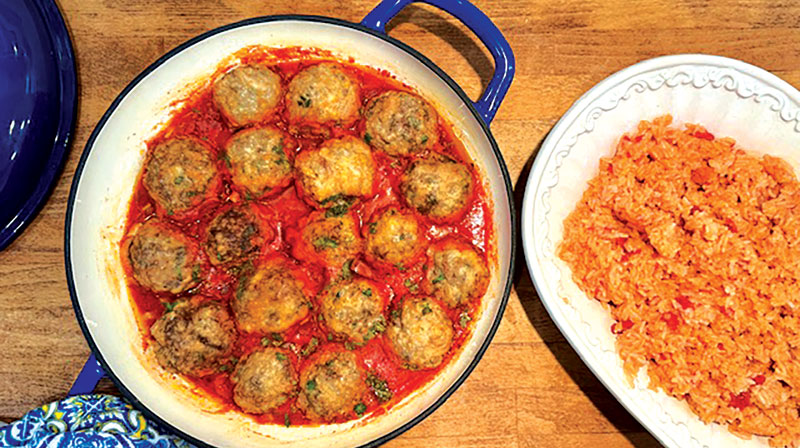
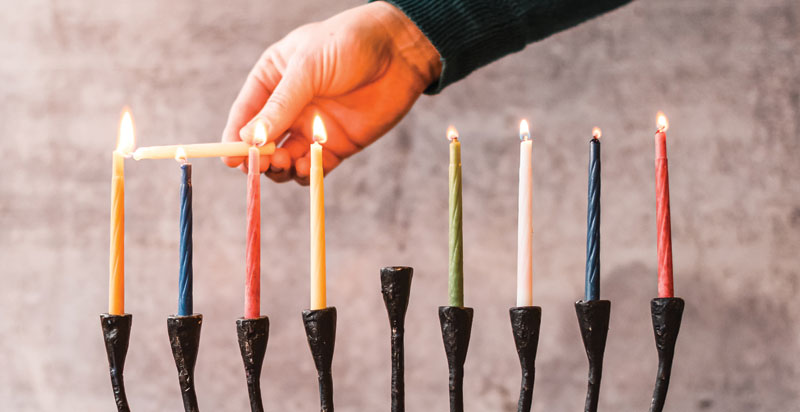
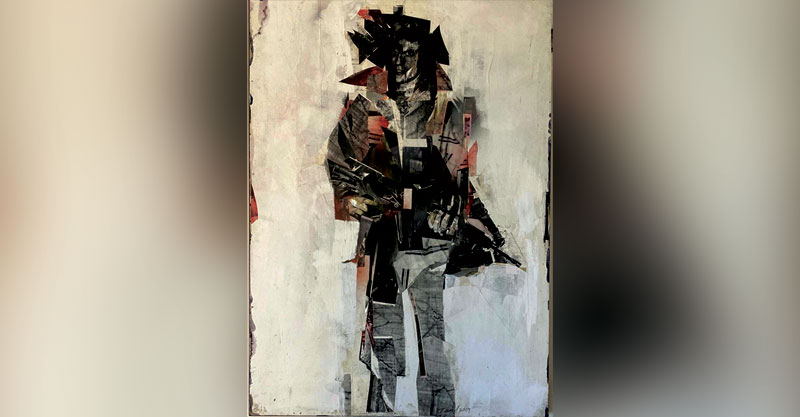

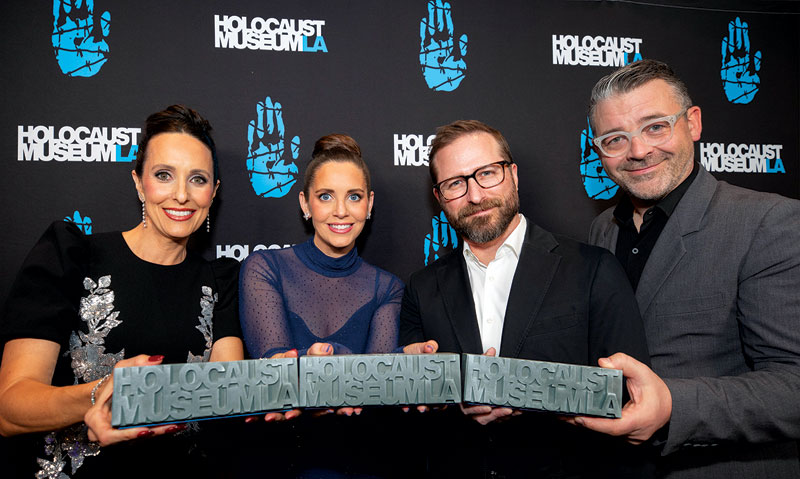
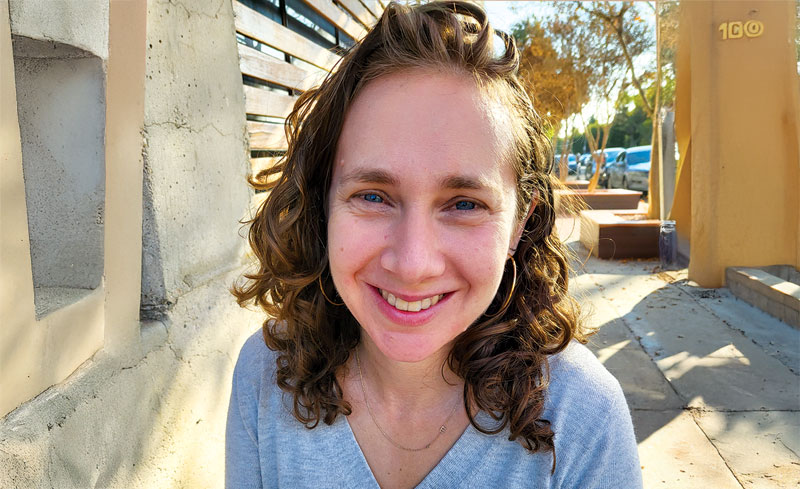
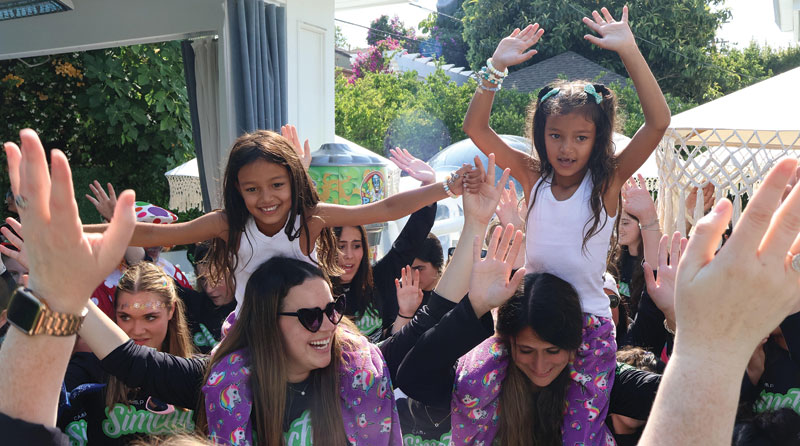


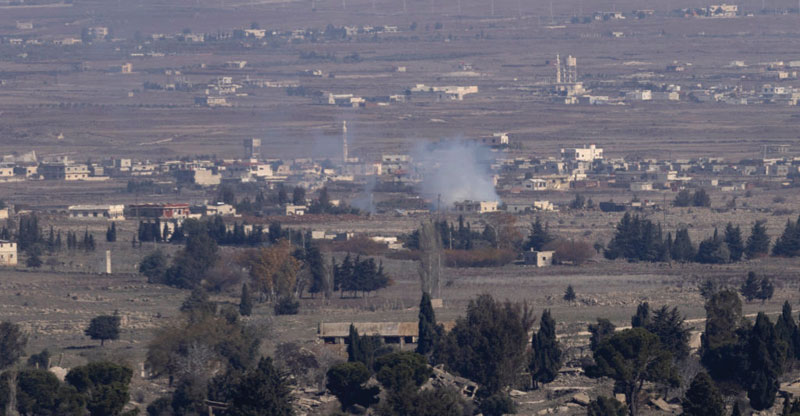



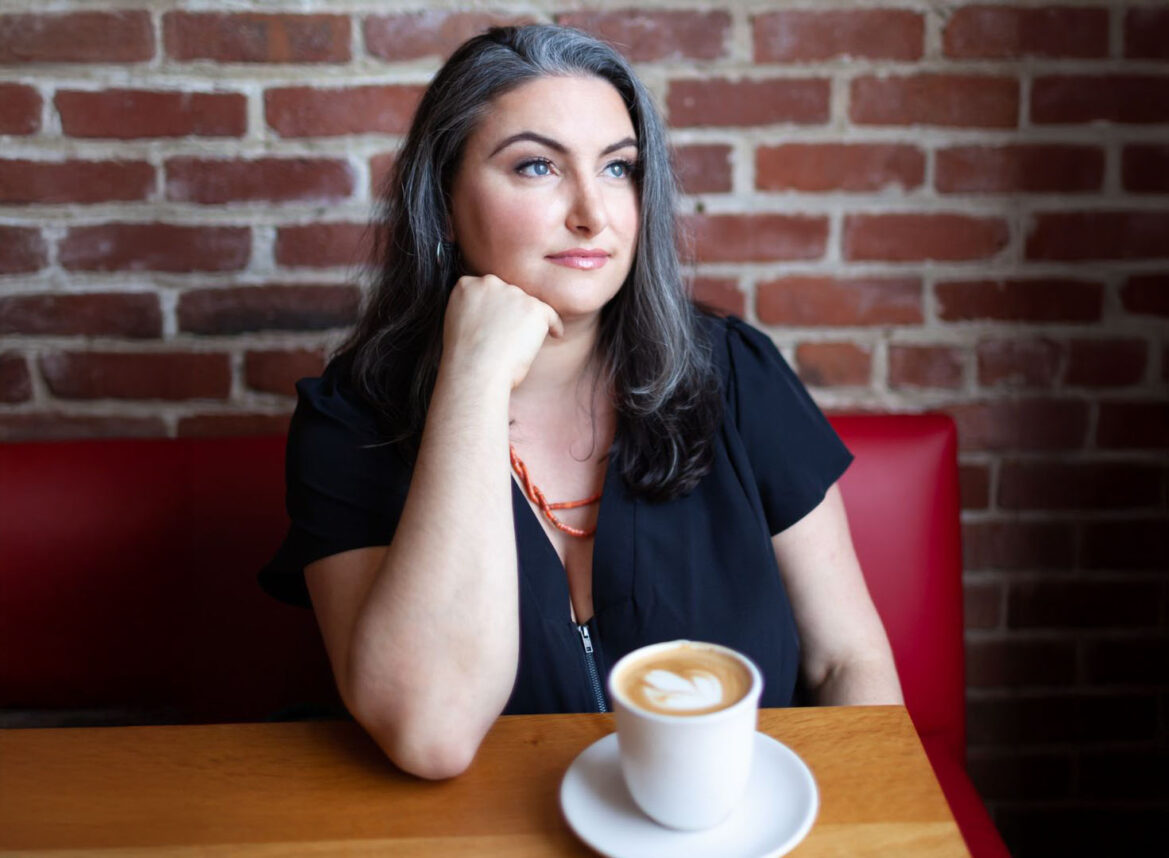

 More news and opinions than at a Shabbat dinner, right in your inbox.
More news and opinions than at a Shabbat dinner, right in your inbox.